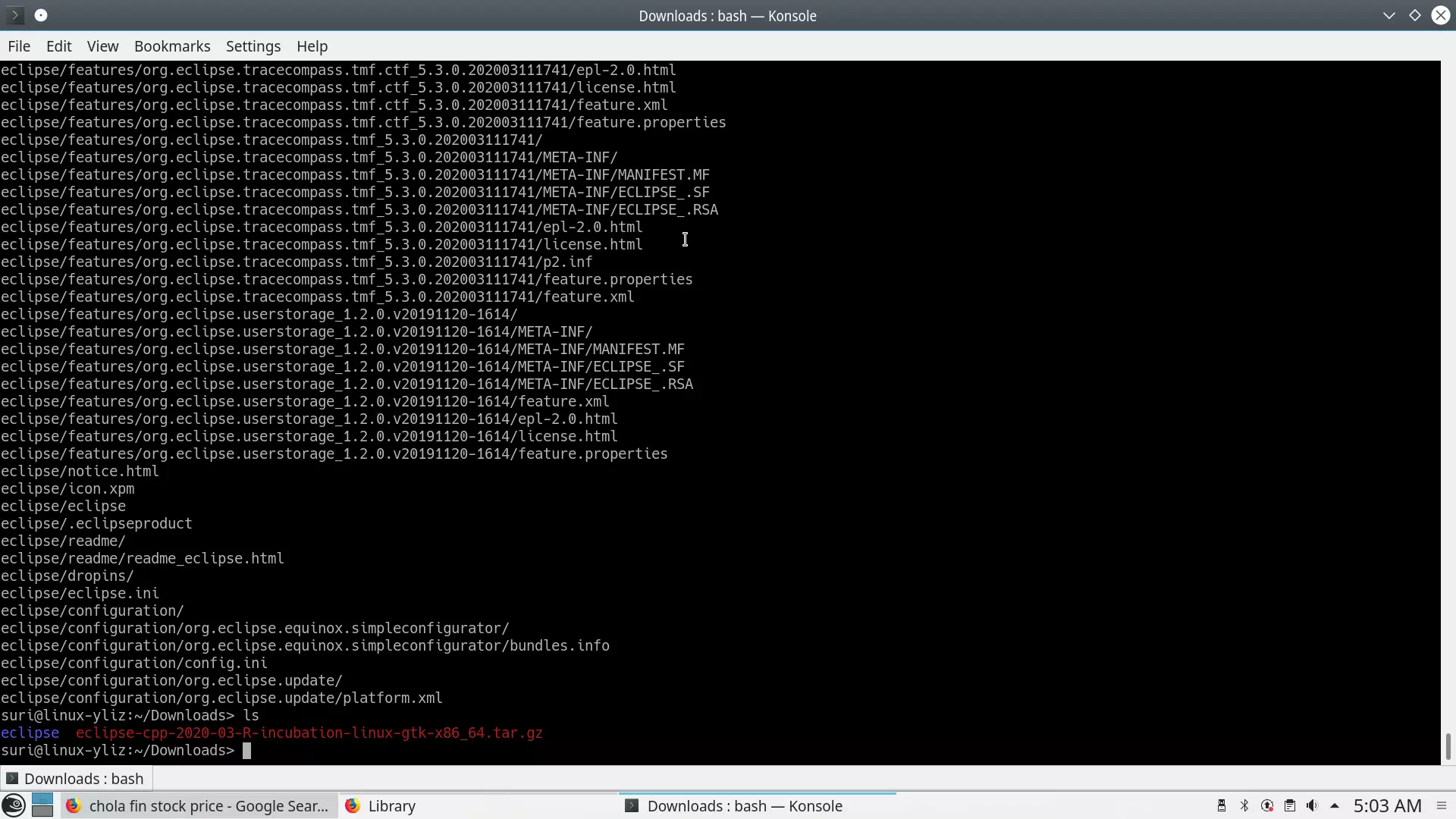

- LINUX UNTAR TO A SPECIFIC DIRECTORY HOW TO
- LINUX UNTAR TO A SPECIFIC DIRECTORY ARCHIVE
- LINUX UNTAR TO A SPECIFIC DIRECTORY CODE
Passing just one filename to tar xf will extract all the archived files as one would expect.
LINUX UNTAR TO A SPECIFIC DIRECTORY ARCHIVE
It's too late rewrite tar to accept multiple archive files as input, but it's not too hard to work around the limitation.įor most people, running tar multiple times for multiple archives is the most expedient option. Tar: Exiting with failure status due to previous errors Meanwhile, GNU tar returns 2 and spams STDERR even with the verbose option off: tar: b.tar: Not found in archive
LINUX UNTAR TO A SPECIFIC DIRECTORY CODE
Annoyingly, the Solaris version of tar does not report any problems either in the return code or with the verbose option ( v). Unless a.tar contains a file named b.tar, the tar command has nothing to do and exits quietly. So if there are two *.tar files (say a.tar and b.tar) your command would expand to: $ tar xf a.tar b.tar So for tar extraction (the x option), the first file passed would be the archive and all other files would be the files to be extracted. The first file or directory passed was assumed to be the device that held the archive in question and any other files or directories where the contents of the archive to be included in the operation. Since it only made sense to execute tar on one device at a time, the syntax was designed to assume one and only one device. tar -xvf myarchive.tar Bbear_EP_04.ac3 Bbear_EP_05.Originally, the tar command was intended for use with magnetic tape devices. Check the following tar command for better understanding. tar archive two files: Bbear_EP_04.ac3 and Bbear_EP_05.ac3. In this example we will extract from the. The tar program also provides the possibility to extract specific files and directories. tbz2), we will simply add the -j tar switch just as so: tar -jxvf 2 -C output/uncompress Extract Only Specific Files and Directories To extract tar files compressed by this algorithm (e.g., tar.bz, tar.bz2 or. tar -zxvf -C output/uncompress Extracting Bzip2 Compressed Filesīzip2 is another file compression program used by the tar command line utility. tgz we will have to use the -z switch as mentioned below. In this section we will be acquainted with how we can extract different compressed tar archives. Follow the example below: tar -xvf myarchive.tar -C output/untarġ directory, 6 files Extracting Compressed Tar ArchiveĪs we have mentioned before, the tar command can create and extract archive files using numerous compression algorithms such as xz, gzip, and bzip2. We can achieve that by using the -C tar switch to specify where you extract the. When you want to extract tar files to different directories you don’t have to change the directory using the cd command or by copying the tar archive to the desired directory then extract files.

The archive indicates the file name and extension. Option(s) indicates which operation executes on the files (creation ( -c), extraction( -x), compression ( -z), etc.).
LINUX UNTAR TO A SPECIFIC DIRECTORY HOW TO
However this article will cover only the subject of how to extract tar archives using special tar options to specify the target directory in addition, we will mention other necessary tar arguments. Tar comes with an enormous amount of options which are and can be confusing for even experienced Linux users. This essential tool is implementing various compression algorithms such as gzip, xz, and bzip2. In other words, the tar program packs many files and folders into a single logical file for easy and fast transmission (e.g. Additionally, tar can be used to compress and decompress these archived files. tar stands for Tape ARchive, and it is used for creating and extracting archive files.

Tar is a very old command line utility from the seventies. Extract Only Specific Files and Directories.


 0 kommentar(er)
0 kommentar(er)
